hi bloggers....
Our College is organising trip to Goa for all the students of IPS group of colleges. the interested candidates may contact the people listed below. the details of the trip are as follows:
Date: 21 November (6 nights-7 days)
Seats: 50 Only (First Come First Serve basis)
Fare: Rs. 4000/- only
Contact Person:
Mr. Ashwini Mishra [09407232271,09977000881]
Mr. Anurag Garg [09826048784]
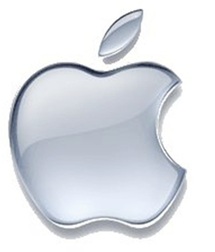 hi bloggers...
THE MAKER OF SHINY TOYS, Apple has had the accusatory finger of trademark infringement pointed at it.
The accusation has been levelled by the Chinese computer screen maker Proview Technology, which is arguing that it owns the rights to the name "Ipad" in China.
The Ipad only turned up in China last month, and it was probably around that time that Proview started ringing up its lawyers and telling them that it owns the rights to the name in the Middle Kingdom. According to the Beijing news it has had the name registered as a trademark since January 2000.
The AFP story claims that one of the Proview shareholders is asking Apple to stop using the name in the country or face the forced removal of its products. Which, as any cowboy will tell you, is fighting talk.
This is not the first time that the two firms have argued over the matter. The pair previously held talks over the transferal of the trademark, which came to nothing. Nothing might be the wrong word however, as it could have been the value of the name that caused those talks to fail.
Proview apparently has put a price tag of $800 million on the Ipad name, and having already been told by the cappuccino firm that it is not allowed to sell to a third party, thinks that Apple is being arrogant by trying to sell the device on its patch.
 hi bloggers......... More than 350 scientists from 50 countries will converge in the city for a four-day meeting of an international scientific body of the developing nations to be inaugurated by prime minister Manmohan Singh here tomorrow. The prime Minister, an eminent social-scientist, will be presented the a medal by the Academy of Sciences for the Developing World at the Hyderabad International Convention Centre in recognition of his achievements in the field of economics.
The annual conference of the Academy, being held for second time in India after 2002, will focus on development of science in the country and also promotion of science education among students.
"The best scientific achievements in India will be highlighted at the meeting," the organisers said. Addressing a press conference on the eve of the general meeting, Academy President Jacob Palis, Executive Director Mohammed Hassan, secretary-general D Balasubramanian and past president C N R Rao said a ministerial round-table examining Africa-India partnerships in science, technology and innovation will be held. On the first day of the meeting science ministers from India, Brazil, South Africa and Zimbabwe would take part in the round-table discussion, they added. Focus of the general meeting would also be on mitigating and adapting to climate change in developing countries."The scientists will discuss the policy initiatives required in this regard and suggest them to the respective governments for adoption," they added. Read more:

hi bloggers...
IBM is replicating its global strategy of luring HP and Oracle-Sun customers into its fold, in India.
IBM announced a new finance program including buyback of used equipment, lease terms and no payments until April 2011 to help current credit-qualified Oracle-Sun and HP customers in India to migrate to its new Power family of servers and storage offerings.
"Cash back opportunities with competitive leasing rates and deferrals will make it easy for Indian businesses to migrate to the new IBM's systems," said Sapan Jain, Country Executive, IBM Global Financing, India and South Asia.
"At our recycling and refurbishment sites in India, we are prepared to take back several models of HP and Sun equipment," said Jain. "The money can be applied to IBM systems, software and services. Financing can smooth out up-front transition costs, helping to better match costs with expected benefits."
In the first half of 2010, IBM claims to have concluded over 500 competitive migrations to Power systems globally. More than 2,600 companies have switched from other vendor platforms since IBM established its migration program four years ago.
Despite such lofty claims, IBM has not been able to reveal how many Oracle-Sun and HP customers have migrated on its platform in the last one month in US. Back home, the company has been offering finance options to Indian users.
"Oracle has also been luring IBM customers, and in business, such practices are not new," said Asheesh Raina, Principal Research Analyst at Gartner. "One has to also consider that HP has no overlapping technologies with IBM except for servers, and that Oracle and IBM are neck-to-neck in the database and middleware markets. But while Oracle is strong in applications, IBM's strength is in infrastructure. A real migration from an Oracle-Sun platform on to IBM looks difficult at this stage."
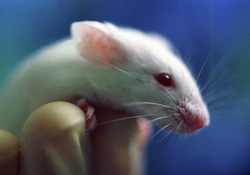 hi bloggers......
LONDON: A team of neurobiologists led by an Indian-origin scientist has claimed to have created mice that can 'smell' light — a potent new tool that could help researchers better understand the neural basis of olfaction or the sense of smell. The research, published in journal 'Nature Neuroscience' , has implications for the future study of smell and of complex perception systems that do not lend themselves to easy study with traditional methods.
"It makes intuitive sense to use odours to study smell," said Venkatesh N Murthy, professor of molecular and cellular biology at Harvard University. "However, odours are so chemically complex that it is extremely difficult to isolate the neural circuits underlying smell that way," he said. For their study, Murthy and his colleagues at Harvard and Cold Spring Harbor Laboratory used light instead, applying the infant field of optogenetics to the question of how cells in the brain differentiate between odours.
Optogenetic techniques integrate light-reactive proteins into systems that usually sense inputs other than light. Murthy and his team integrated these proteins called channelrhodopsins into the olfactory systems of mice, creating animals in which "smell pathways were activated not by odours, but rather by light" . "In order to tease apart how the brain perceives differences in odours, it seemed most reasonable to look at the patterns of activation in the brain," Murthy said.
"But it is hard to trace these patterns using olfactory stimuli, since odours are very diverse and often quite subtle. So we asked: What if we make the nose act like a retina?" With the optogenetically engineered animal, the scientists were able to characterise the patterns of activation in the olfactory bulb — the brain region that receives information directly from the nose. Because light input can easily be controlled , they were able to design a series of experiments stimulating specific sensory neurons in the nose and looking at patterns of activation downstream in olfactory bulb.
"The first question was how processing is organised, and how similar inputs are processed by adjacent cells in brain," Murthy said. But it turns out that spatial organisation of olfactory information in brain doesn't fully explain our ability to sense odours, he added. The temporal organisation of olfactory information sheds additional light on how we perceive odours.
Read more:
Now, mice that can 'smell' light - The Times of India http://timesofindia.indiatimes.com/home/science/Now-mice-that-can-smell-light/articleshow/6766640.cms#ixzz12h9a2IMb
hi bloggers..... Finally the Commonwealth Games ended and India stands in second posotion with 38 gold medals and a total of 101 medals . A matter of great pride for our country. The Indian competitor came out with great excellence and gave India a historic 38 gold,27 silver,58 bronze medals the best harvested ever and thus leading the final pecking of over 100 medals. click here for more info......people do comment wht u think abt it ?
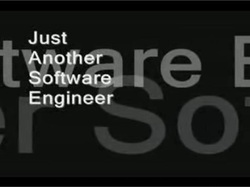 hi bloggers......
Every year, India produces close to 500,000 graduates from its engineering colleges however, the industry don't absorb all due to their inadequate skill sets. According to a Nasscom estimate, only 25% of the engineers graduating are employable.
The demands of software industry and the quality of education in universities don't tally at all. The majority of universities fail to adequately prepare students for the professional world. As a direct consequence, most IT companies are forced to increase the duration of training and consequently their annual expenditure.
V Balakrishnan, Chief Financial Officer of Infosys opines that the current curriculum in colleges needs to be altered for producing better students. He says, “The syllabus should be aligned to the needs of the industry. At Infosys, we having to train and retrain candidates, though we have a strict screening process during recruitment."
If we look at the Tata Consultancy Services (TCS), they increased the training period of their new joiners from three months to six months, last year. Infosys has been spending $175 million annually on training programmes. According to sources, the company may increase marginally this expenditure for the new training schedule. At present, Infosys spends $5,000 towards training of every employee it hires.
Wipro, India's third largest software firm, has an induction training of three months for fresh campus recruits. “We spend approximately 0.65% of our revenue and this percentage has remained constant over the years,” says Selvan D, senior vice-president, talent transformation.
Nasscom president Som Mittal says, “We would obviously need to equip our students with the relevant subject matter expertise and soft skills. However, certain basic knowledge is expected of the students. In our education system, neither the content nor the delivery is adequate. Education must be made relevant at the outset".
 hi bloggers.....
India has only 50,000 registered architects as against the requirement of 500,000. Of the 170 architectural colleges in India, the number of private colleges are five times higher than the government ones, which are just 20-23. The students intake is limited to 40-80 per school and each year around 3,000 architects pass out.
Another factor is shortage of faculty. There is a 50 per cent shortage of faculty members across all architectural schools. India would require 15 more teachers for each school. Another issue is the lack of awareness among students about architecture, according to Devadas. Besides, architectural services are concentrated only in large cities, and are not percolating down to small towns and rural areas.
"It is not just the shortage of colleges, but also about the quality. The architecture education must need the profession, and not the other way round," insists Neerja Tiku, head, Department of Architecture, School of Planning and Architecture, New Delhi.
For a five-year bachelors degree in Architecture, the course fee starts from Rs 15,000 per annum in government colleges and in private colleges, it varies from Rs 1 lakh to Rs 10 lakh as initial payment, depending on the reputation of the college, informs KS Anantha Krishna, principal and director of School of Architecture, RV College of Engineering, Bangalore.
"The architects are relatively underpaid when compared with IT and other professionals. Even the corporate and government undermine the value attached to the profession and pay only 3-4 percent of the estimated cost," says Shiva Leelanand, chief consultant - urban design, Associate of the Indian Institute of Architects, Hyderabad.
Maharashtra has 52 colleges both private and government-run, Tamil Nadu has 32, Karnataka 26, Andhra Pradesh and Kerala each 8 while Puducherry and Bihar have two each.In Andhra, 1,000 students appear for the entrance test for the 650 seats. The state has only 1,300 registered architects and would require 15,000 more in future.

Commonwealth Games 2010 is expected to result in an overall economic impact of $ 4,940 million on India’s GDP during a period of four years ending 2012 and create an employment opportunity close to 24.7 lakh. According to a Games Organising Committee document, this figure is almost three times the economic impact the 2006 Melbourne Games had on Australian GDP.
“It is estimated that the Commonwealth Games 2010 would result in an overall economic impact of approximately $ 4,940 million on India over the period of 2008—12,” the document said.It said that the 2002 Manchester Games created an impact of nearly $ 3,400 million in Britain’s, while the Melbourne Games created an impact of $ 1,600 million on Australia’s GDP.
The OC estimates said the Delhi Games are also expected to create an “enormous employment opportunity” of close to 24.7 lakh jobs.The CBCI, headed by OC Chairman Suresh Kalmadi, also aims to draw high-powered offshore business delegations to India during the Games and enable them to leverage the unfolding opportunity of transacting business.
hi bloggers...
35 undergraduates from Bangalore and Hyderabad, under the guidance of scientists from ISRO, created a masterpiece. Studsat, a pico satellite, one of the 5 satellites carried by the PSLV-C15 launched on July 12, weighing less than 1.5 kgs was a master work of the team of 35 geniuses.
A picosat is a miniaturized artificial satellite. For the first time in India such a picosat has been designed, which has an imaging camera and is fabricated. The students also tested the adequacy of the clean room and ground station built for fabricating Studsat, and in receiving data and commanding the satellite. The camera has a low resolution of 90 meters. The panchromatic images provide terrain information during the satellite's short lifespan of six months to one year.
The idea behind this exercise was to provide students with an opportunity to understand the mission aspects and gain hands-on experience in building a working satellite. After the launch of Chandrayaan-1 in October 2008, Indian students have started taking keen interests in space research and are experimenting on latest technologies.
Two nano satellites (in the less-than-15-kg category) are being built by IIT Kanpur and IIT Mumbai, and two by Chennai-based universities. All four satellites will be launched before mid-2011. ISRO has undoubtedly played a key role of a confidant all through for such kind of interested students. The space research in India is surely at its heights with such talented inventions. With Chandrayaan-2 and human space flight in prospect, it is clear that rising India's space future is very bright.
|
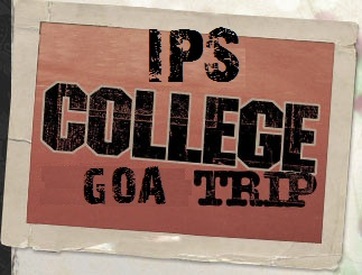





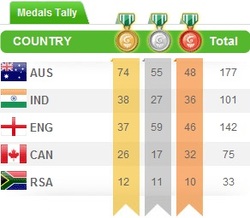





 RSS Feed
RSS Feed